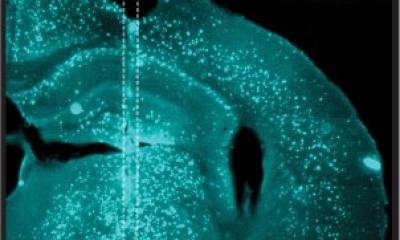News • Caudate nucleus
How Alzheimer's puts your brain on autopilot - in a good way
Patients with Alzheimer's disease (AD) have a larger caudate nucleus, a brain area involved in habits and used to navigate in the environment on an autopilot mode, shows for the first time a Canadian-Norwegian study published in Acta Neurologica Scandinavica. Not good news, you may think. Hold on, this could open new research avenues for AD.
Dr. Veronique Bohbot (Douglas Mental Health University Institute; CIUSSS de l'Ouest-de-l'Île-de- Montréal, Canada) in collaboration with Dr. Karin Persson and Dr. Knut Engedal (Vestfold HospitalTrust and Oslo University Hospital, Norway) published new findings showing that patients with AD had one region of the brain which was larger compared to non-dementia patients with memory problems. This brain region, called the caudate nucleus, is a memory system involved in habit formation that competes against the hippocampus, another brain structure involved in memory.
Is a larger caudate nucleus a characteristic of future diagnosis of AD in healthy individuals? "That's the important question that emerges from our research. Atrophy of the hippocampus and neighbouring brain structures are known to be one of the best predictors of future diagnosis of AD. In both humans and rodents, past research found that when the caudate nucleus was larger, the hippocampus was smaller. And a smaller hippocampus is associated with an increased risk of numerous disorders such as AD, post-traumatic stress disorder, schizophrenia, and depression," says Dr. Veronique Bohbot, researcher at the Douglas Mental Health University Institute and associate professor at McGill University. "We don't know yet whether the caudate nucleus plays an active role in AD, but we do know that the caudate nucleus plays an active role at inhibiting the hippocampus," adds Dr. Bohbot.
For this study, the scientists measured and compared the caudate nucleus and the hippocampus volumes of 257 patients showing symptoms of either dementia or subjective and mild cognitive impairment (referred to as non-dementia). Patients with AD had atrophy of the hippocampus as well as a larger caudate nucleus. In brief, the larger the volume of the caudate nucleus, the smaller the volume of the hippocampus. "If the caudate nucleus plays an active role at inhibiting brain activity in the hippocampus, then people should be cautious when engaged in activities that stimulate the caudate nucleus, especially as people are getting older. Instead, healthy older adults should engage in activities that stimulate the hippocampus, such as mental mapping," says Dr. Bohbot. A recent study showed in a very large cohort of healthy individuals across the life span that the caudate nucleus is the only brain area that does not shrink with age.
To keep your brain healthy, work on the way you get around
Mental mapping refers to one of the two strategies to get around in the environment: the spatial memory strategy. It relies on the hippocampus and involves building relationships between environmental landmarks, such as buildings or parks, to form mental maps of an area. On the contrary, the response strategy depends on the caudate nucleus and involves learning a route by performing a sequence of movements from specific points like "turn right at the hospital". With practice, this strategy becomes a habit, like when we go to work on autopilot. Older adults using mental maps (spatial strategy) have more brain activity and grey matter in their hippocampus. They smoke fewer cigarettes, are less likely to take drugs and drink half the alcohol compared to response strategy users.
The study findings might bring new avenues for research on AD. While previous clinical trials have focused on eliminating the pathology of the hippocampus alone, future clinical trials may benefit from reducing stimulation of the caudate nucleus so that it does not actively work against hippocampus during treatments.
Source: CIUSSS de l’Ouest-de-l’Île-de-Montréal
04.08.2017











